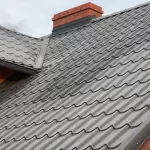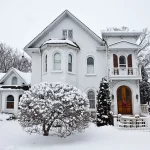
Picture this: a city skyline dotted with lush, living rooftops instead of barren asphalt. That’s the promise of green roofing systems—a blend of nature and architecture that’s as practical as it is beautiful. But what exactly are they, and why should you care? Let’s dive in.
What Are Green Roofing Systems?
Green roofs, or living roofs, are rooftops partially or completely covered with vegetation. They’re layered like a lasagna—waterproofing, drainage, soil, and plants—all working together to create a mini ecosystem. There are two main types:
- Extensive green roofs: Lightweight, low-maintenance, and shallow (2-6 inches of soil). Think sedums, mosses, and grasses.
- Intensive green roofs: Deeper soil (6+ inches), supporting shrubs, trees, and even gardens. Heavier and pricier but more versatile.
Why Go Green? The Benefits
1. Energy Efficiency (And Lower Bills)
Green roofs act like natural insulation. In summer, they absorb heat—keeping buildings cooler. In winter, they reduce heat loss. One study found they can cut energy use by up to 75% for cooling. That’s not just eco-friendly; it’s wallet-friendly too.
2. Stormwater Management
Urban flooding? Green roofs soak up rainwater like a sponge, reducing runoff by 50-90%. Less strain on drains, fewer overflow incidents. Cities like Toronto even mandate green roofs for large buildings—because they work.
3. Air Quality Improvement
Plants filter pollutants and capture dust. A single square meter of green roof can remove 0.2 kg of airborne particles annually. For smog-choked cities, that’s a game-changer.
4. Urban Heat Island Mitigation
Ever noticed cities are hotter than rural areas? Traditional roofs absorb and radiate heat. Green roofs, though, can lower ambient temperatures by 3-7°C. Imagine turning down the city’s thermostat—naturally.
5. Biodiversity Boost
From bees to birds, green roofs create habitats in concrete jungles. Berlin’s green roofs host endangered species like the black redstart. Not bad for a rooftop, huh?
But Wait—Are There Downsides?
Sure, no system’s perfect. Green roofs can be:
- Costly upfront: Installation runs $10-$30 per square foot. But long-term savings often offset this.
- Structurally demanding: Older buildings may need reinforcement.
- Maintenance-heavy (sometimes): Intensive roofs need care like a garden; extensive ones, not so much.
Green Roofing Trends to Watch
The industry’s evolving fast. Here’s what’s buzzing:
- Solar-green roof combos: Panels + plants? Yes. Plants cool panels, boosting efficiency by up to 16%.
- Modular systems: Pre-grown trays make installation a snap.
- Local plant focus: Native species = less water, more resilience.
Final Thoughts: Rethinking Rooftops
Green roofs aren’t just a trend—they’re a shift in how we see urban spaces. Less wasted real estate, more living, breathing ecosystems. Whether you’re a homeowner or a city planner, the question isn’t just “Can I afford it?” but “Can I afford not to?”










